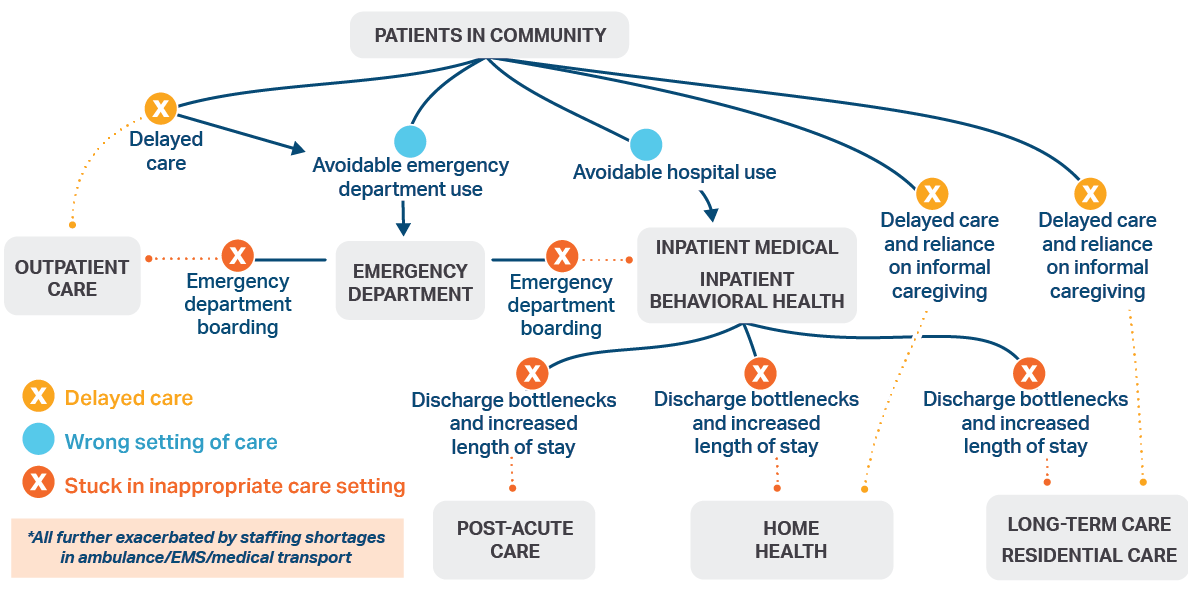Health care workers provide services in many settings, and make sure that patients get the care they need at each stage. Even before 2020, health care workers reported challenges such as high turnover and a lack of support.
The COVID-19 pandemic exacerbated pre-existing challenges such as stress, inflexibility, and administrative burden. With a tighter labor market, many care providers have left their roles seeking higher pay (e.g., at comparatively well-resourced organizations, in different health care settings, or in contract roles). Some others have redirected their careers away from patient care to administration or research, or have left health care altogether.
The Massachusetts health care workforce continues to experience substantial disruption, with high turnover and shortages of care providers in many roles, especially in behavioral health care and long-term care.
Workforce shortages throughout the health care system can create ripple effects, slowing patient flow across settings and leaving some patients unable to access needed care. As seen in the chart below, these bottlenecks can contribute to:
- Increased emergency department boarding,
- Delays in discharging patients, and
- Increased length of stay for patients.

In addition, these issues are further impacted by staffing shortages across ambulance, EMS, and medical transport workers.
Workforce staffing shortages threaten the Commonwealth’s efforts to advance health care affordability, access, and equity. The HPC continues to examine trends in the health care workforce in Massachusetts and their impact on the Commonwealth.
Behavioral Health Workforce Center
The HPC Behavioral Health Workforce Center (BHWC) was formed in partnership with the Executive Office of Health and Human Services (EOHHS) to conduct research and make data-informed policy recommendations to strengthen the behavioral health workforce in Massachusetts.
Learn more about the work of the Behavioral Health Workforce Center.
